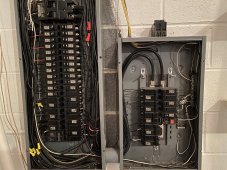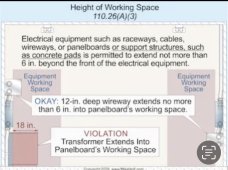My friend just got a few quotes for installing a critical loads panel (sub panel) directly next to main panel in prep for an inverter to run those circuits via an interlock on sub panel. All three quotes came back with significant swings of cost. I called the contractors with him and learned why they are so different and now questioning how I wired mine (NEC 2020) in North Carolina.
In common: All are using SER #2 feeder between joists and derating subpanel; All are using 1.5" conduit nipple between joists (load bearing wall) to connect sub panels for branch circuits and wire nuts in main panel to extend to sub
In common: All are using SER #2 feeder between joists and derating subpanel; All are using 1.5" conduit nipple between joists (load bearing wall) to connect sub panels for branch circuits and wire nuts in main panel to extend to sub
- Quote 1: Lowest Cost - Master Electrician and extends hot legs ONLY to new sub panel
- Quote 2: Medium Cost - Master Electrician and extending both hot and neutral's to make sure there is no problem with AFCI/GFCI circuits
- Quote 3: Highest Cost - Non-Master but licensed - extending hot, neutral and grounds to sub panel (I really questioned this one as the panels are already grounded via the SER





